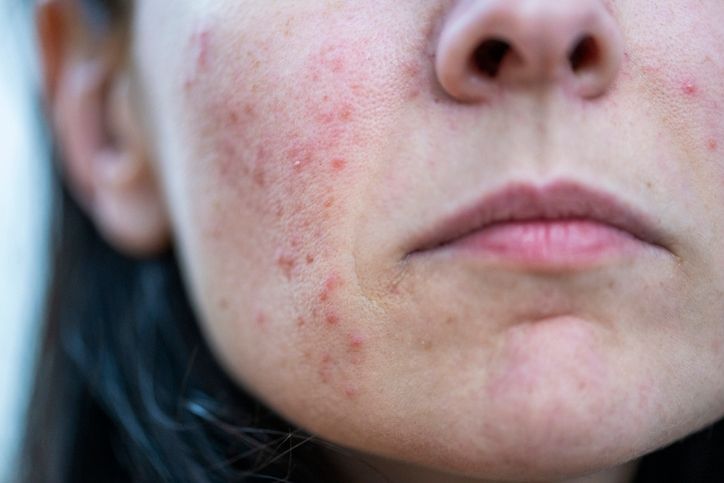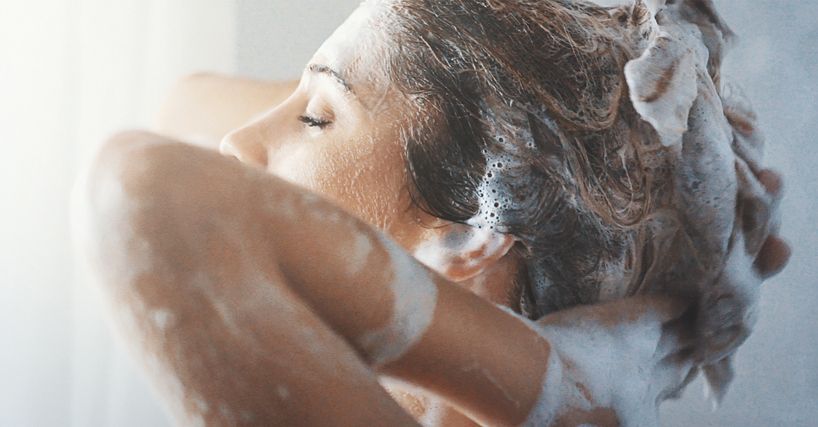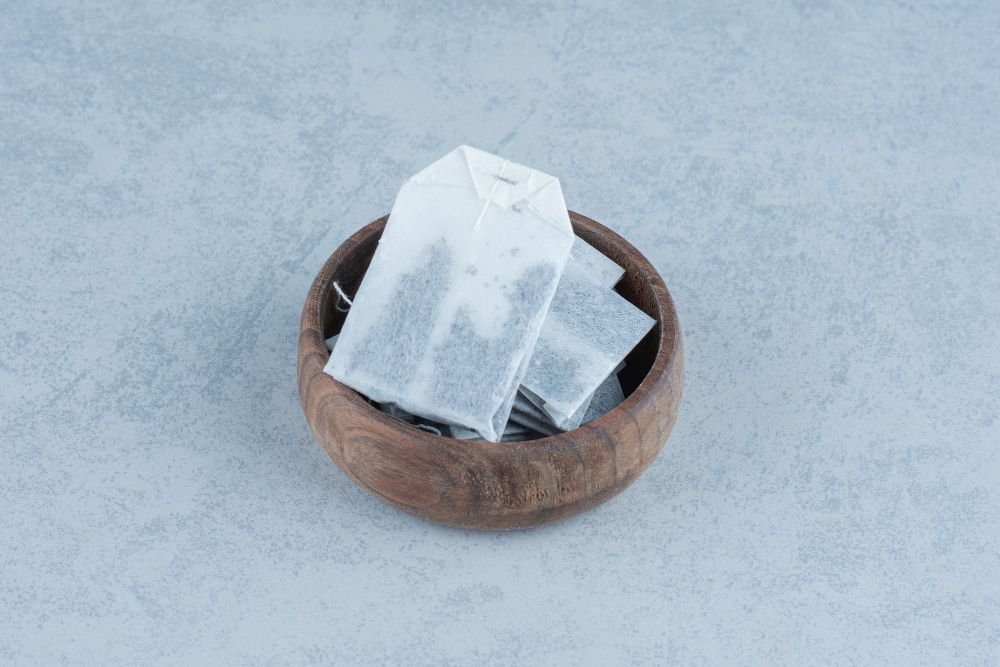

Book Now to Experience
F8 Hair Regrowth Treatment
1 Minute Self-Registration
Date should not be before minimal date
Author: Sophia Man|Updated: 23 July 2024
Have you been pulling out thick clumps of hair when shampooing your head? Is your ponytail getting thin? Are you checking the mirror daily, dreading the possible sight of wider hair parting or bald spots? Over 50% of women will experience significant hair loss in their lives. While most women start losing hair in their 50s, younger women can also shed hair due to additional factors. Therefore, you should get to know and stop the the causes of hair loss which are ruining your hair!

1
What is Female pattern hair loss?
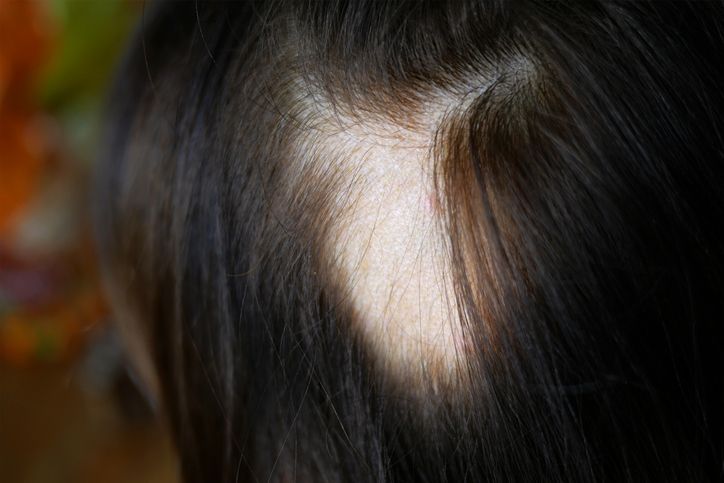
Both Female pattern hair loss and male pattern baldness are known as androgenetic alopecia, as androgenetic alopecia is the overall medical term.
Keep in mind that up to 100 strands of daily hair loss are regular. However, the problem arises if you have been cleaning up larger-than-usual hair clusters from the shower drain or noticing significantly thinner or missing hair layers on your head.
You may have female pattern hair loss if you notice the following symptoms:
- Hair shedding: You notice more-than-usual hair falls in the shower drain and on your pillow when you wake up. When you run your finger through your hair, you can easily pull out a chump of hair. - Receding hairline: You might notice your forehead getting large. The entire hairline usually does not recede in unison; instead, you will first notice a widow's peak or patchy hair loss alongside the hairline. - Spot baldness: Also known as alopecia areata. You will notice small, circular bald spots or patchy hair loss appearing in an irregular pattern all over your scalp. - Thinning hair: Lose in hair density. You might notice your hair getting flat, and the hair parting on top of your head might gradually get wider; when you do a ponytail, you might see more exposed scalp skin; you also need to make more loops of the hairband to tighten the ponytail. - Brittle hair: Your new hair becomes dry, dull and frizzy. It becomes easy to break off some hair strands just by tugging them in their middle.
When you lose hair excessively, it is due to weak hair follicles. Most women have over 1 million follicles on their scalps. A hair follicle cannot grow hair when its metabolic rate is too low, mainly because of weak microcirculation of the surrounding capillaries and insufficient nutrient supply.
Now that you know what is happening on your scalp, it's time we help you identify the cause of your female pattern hair loss. This way, you stand a winning chance at regrowing luscious hair!
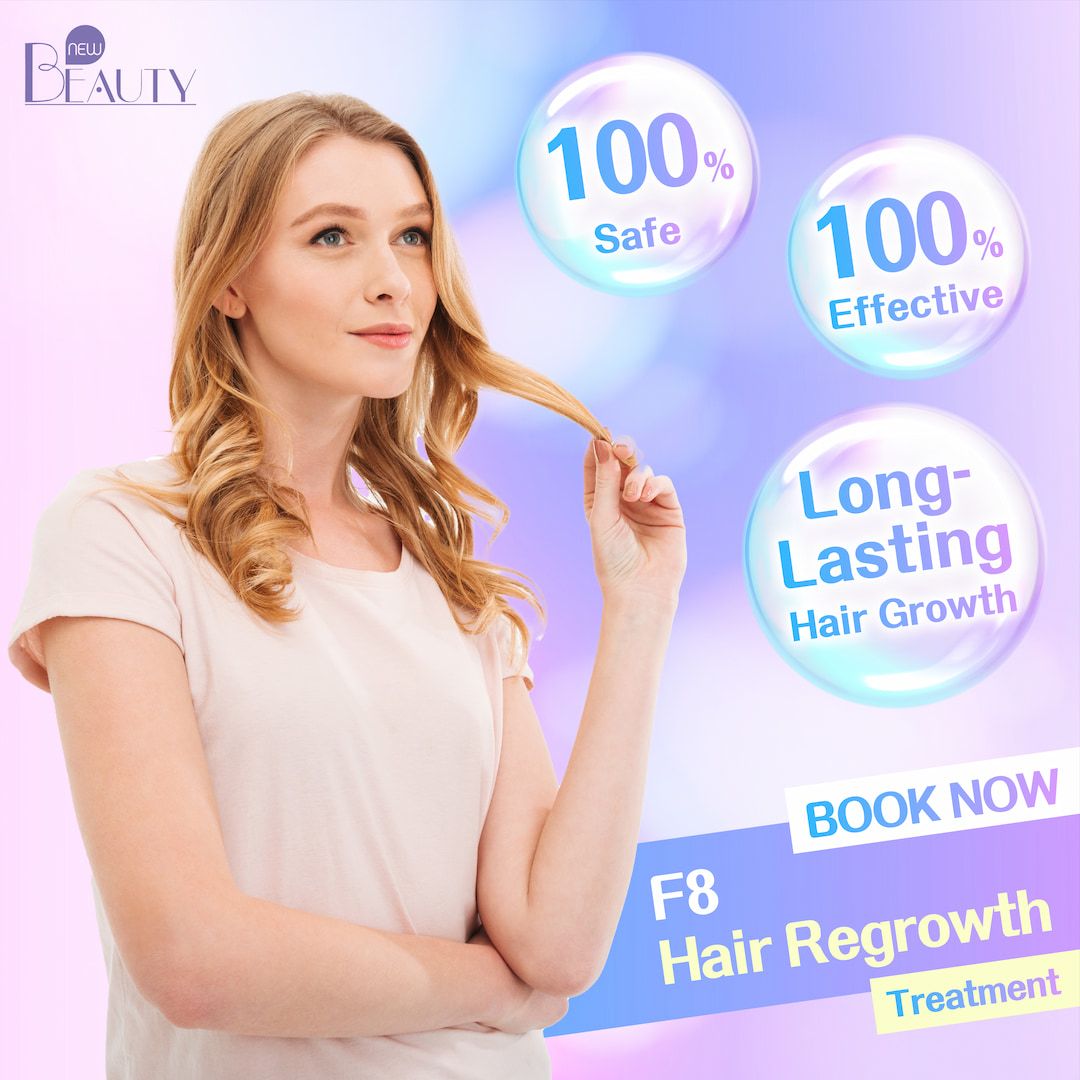

2
Genetics
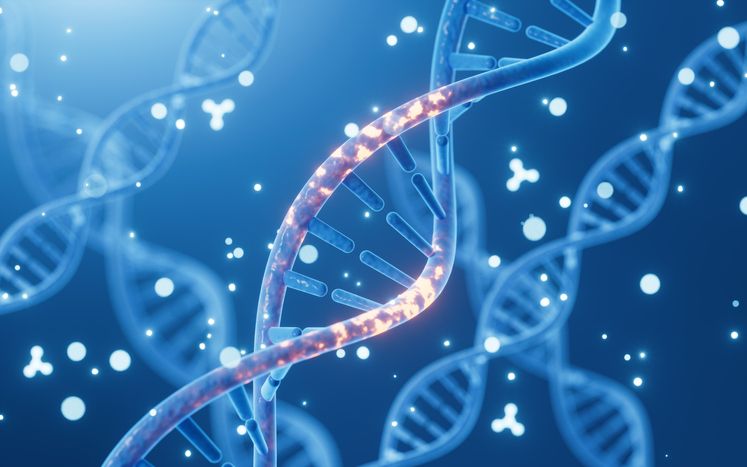
I am sorry: you might just be less fortunate from the get-go. You are much more likely to lose hair if your parents also experience hair loss.
Study shows hereditary hair loss affects up to 38% of women worldwide, and while hereditary hair loss is widespread among people over their 50s, it can also happen to those in early-to-mid adulthood.
One popular myth is that a woman's risk of hair loss depends on if and when her father started losing hair. But, in actuality, both parents can pass down hair loss to their little girl.
It is, therefore, very easy to predict if you will lose hair in the future: you will likely experience gradual thinning around the same age your parents did.
Genetics makes for permanent hair loss, meaning your hair will not grow back without professional intervention. You can visit a hair clinic for prescription medication, most likely oral or topical minoxidil.
While minoxidil has been clinically proven to encourage hair growth, its effects depend mainly on individual physical conditions. Minoxidil can also bring serious side effects, such as:
- irritated scalp skin, - acne, - increased body hair growth, - swelling of the face
Also, minoxidil might not be safe for consumption by pregnant women, though research results are indefinite.
Read More

3
Aging

We all try to prevent it with no veil: ageing affects our physical conditions, including our skin and hair.
The statistic shows that about 55% of women experience sudden hair loss once they have reached their 70s. Many women will pull out clumps of hair while using hair brushes. They will also see brittler hair strands, receding hairline and thinner hair volume with more exposed scalp skin at a drastic rate.
Like other parts of your body, the metabolic rate at your scalp slows once you reach middle and old age - the cellular turnover rate decreases, meaning there are more old or dead skin cells than new ones. As a result, your scalp becomes dry and fragile, not-suited for hair growth.
Your hair follicles also become weak, making hair growth difficult. The hair strands are thin, and growing hair becomes dull and brittle.
Aging makes for permanent hair loss. You may try a laser comb to stimulate the scalp cells and follicles. However, at-home laser treatments can be inefficient, giving slow and insignificant hair growth, which fails to catch up to your hair loss rate. At its worst, you can mishandle the laser comb, and the non-personalized laser wavelength can burn your scalp!
The most dramatic and direct way to regain your lost hair volume as you age is hair transplantation or surgery. However, as an invasive procedure, hair transplants can be inconvenient and risky: your surgeon might be inattentive or unskilled, or your scalp condition fundamentally does not agree with the implantations. You put yourself at risk of:
- extensive scalp scaring, - unnatural-looking hairline and hair pattern, - scalp necrosis (scalp skin tissues die and darken), - poor hair growth rate, - scalp infection (large, red and painful lumps and cysts on the head)
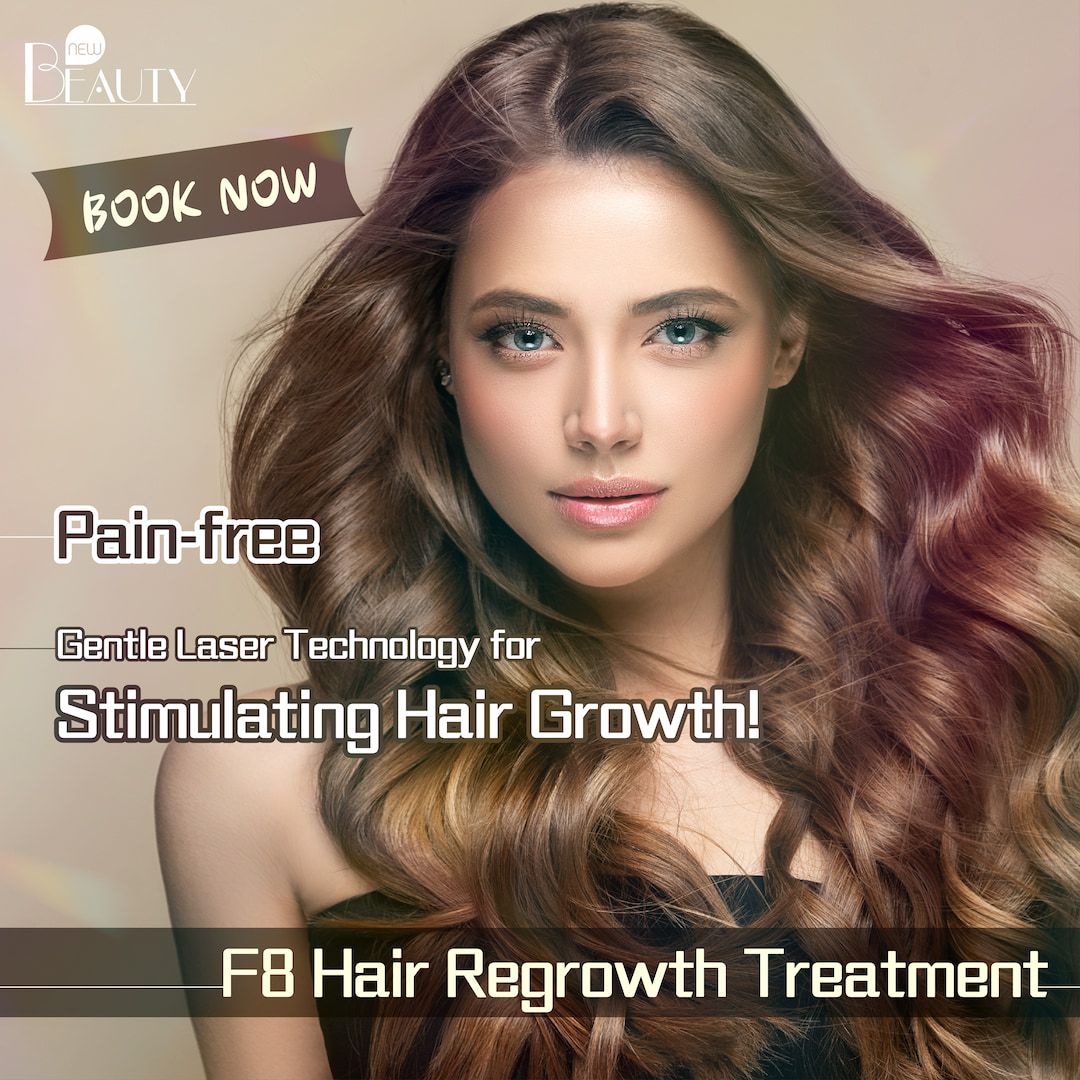

4
Postmenopause
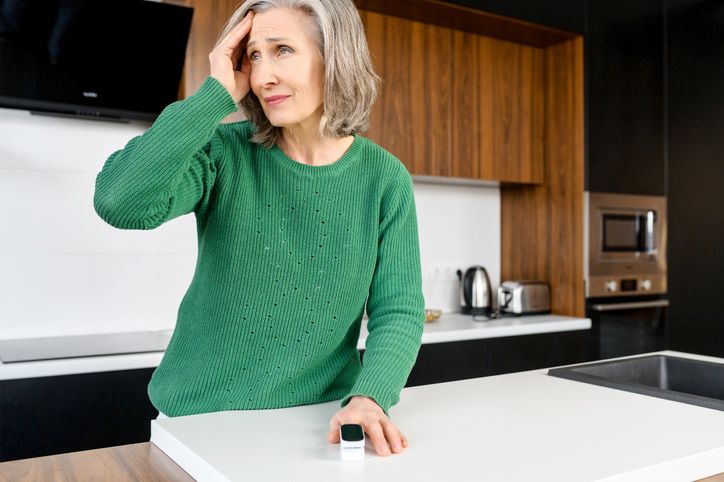
Hormonal imbalance in your body can bring significant impacts, such as mood changes, acne, body hair growth and hair loss.
Menopause is perhaps the biggest life stage which induces drastic hormone level changes in women. When you are in menopause, estrogen (the female hormone) level plummets, slowly stopping periods and ovulation.
After menopause comes postmenopause, your estrogen level remains low, and, in reverse, your androgen (the male hormone) level increases. High androgen level is the reason why postmenopausal women usually have hair falls.
Postmenopausal hair loss is mostly permanent. Still, active approaches such as hair transplants and prescription minoxidil may be able to revive your hair growth. However, consider that these hair treatments carry risks of side effects, which may further damage your hair.
If your hair is not falling out at a drastic rate, you may be able to retain hair strands and even encourage hair growth by taking better care of your hair and scalp. For example, you can use a scalp massager and hair oil to moisturize and stimulate the scalp and hair cells. However, these hair care tips take at least months to begin showing little (if any) results.
Perhaps most important, you should take good care of your postmenopausal body by eating nutritiously and staying active each day. Staying in good health is the foundation for any hope of luscious hair growth in all life stages.

Book Now to Experience
F8 Hair Regrowth Treatment
1 Minute Self-Registration
Date should not be before minimal date

5
Polycystic ovary syndrome (PCOS)
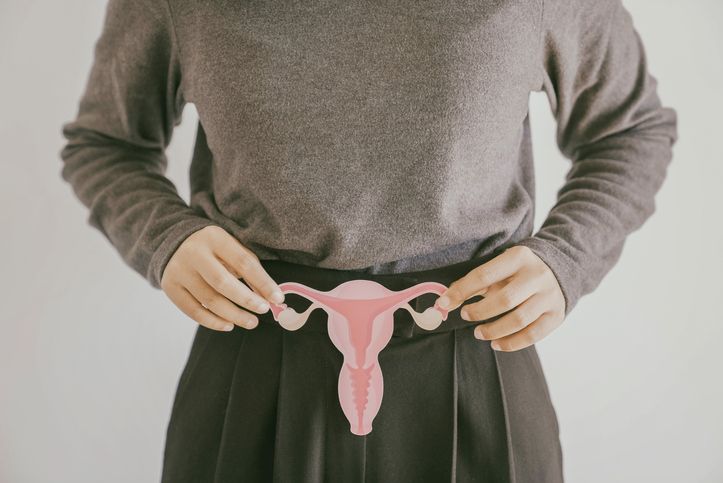
Another likely reason for high androgen levels in women is polycystic ovary syndrome (PCOS).
If you have PCOS, your ovaries produce too much androgen, which interferes with and even stops ovulation. Instead, tiny, painful cysts form in your ovaries.
Hair loss is a common symptom of PCOS. You may have PCOS if your hair loss occurs and is with the following symptoms:
- an irregular or missing menstrual cycle, -acne, - oily skin - excess body hair growth, - central weight gain, - infertility
PCOS is no joke, as it puts you at high risk of fertility, diabetes and cardiac diseases. Therefore, you should seek professional mental health instead of hair treatment. Your doctor will treat your PCOS with diet and exercise schedules and prescription medication (i.e. birth control pills, insulin medications). These treatments aim to work to suppress your androgen production and promote ovulation.
Once PCOS is treated, your hair growth should return.


6
Hairstyles
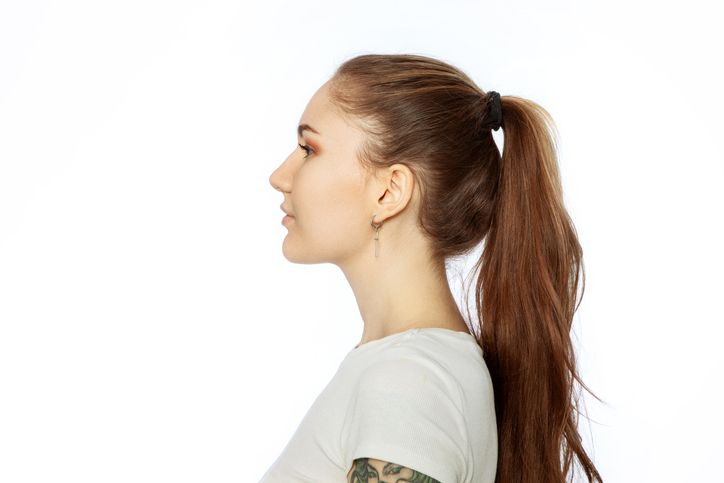
Don't we all love a sleek bun or high ponytail? These sharp and tight hairstyles can give you a chic and professional look. However, while they are great office hairdos, they damage your hair and scalp!
Have you ever felt your scalp getting tense and sore after a long day of wearing tight braids? That's tension put on your hair roots by pulling your hair so tightly. What's more, you will likely notice the hairdo getting loose by the end of the day: that's some of the hair strands torn out of the hair follicles.
Constantly wearing tight hairdos means putting much tension on your scalp and repeatedly pulling out your hair. Eventually, your hair follicles will be so scarred that they can no longer grow new hair—this type of hair loss is called traction alopecia.
Noticing traction alopecia at its early stage to prevent it from becoming permanent:
- receding hairline along the forehead, temples, behind the eas and the nape, - minor acne along the hairline or the scalp, - red, itchy scalp, - pus-filled bumps on the scalp, - scalp infections, - your hair parting getting gradually wider, - broken hair strands among the mane
It is too late once you start noticing shiny and smooth bald patches—your traction alopecia has turned permanent. After that, you may undergo the more risky hair transplant surgery or wait for natural but inefficient laser combs.
Opt for loose hairdos or let your hair down to prevent or slow down traction alopecia. If you wear hair extensions, only wear them briefly each time. For deadlocks, choose thicker braids as the tension is dispersed, and loosen the braids every 3 months.
Most importantly, you should pay attention to pain and soreness on the scalp and loosen your hairdo or hair accessories accordingly.
Read More

7
Too much dyeing and ironing
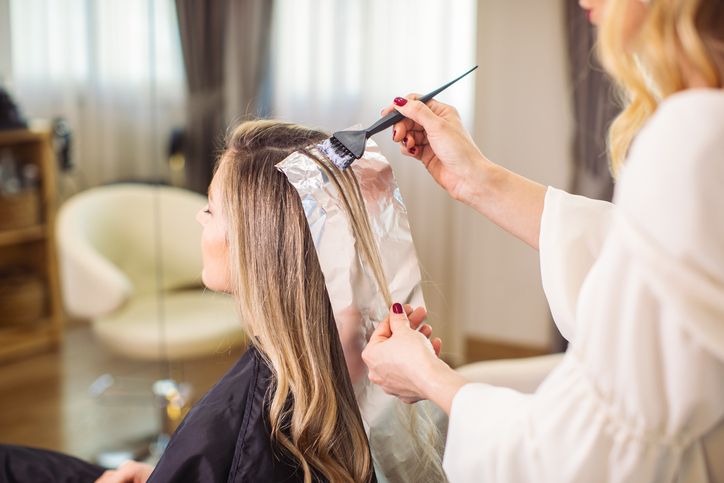
Do you frequent the hair salon? Do you use an at-home hair straightener? Be careful: you might be giving yourself hair loss one perm at a time!
Perms and hair dyes are highly concentrated chemical solutions to be soaked by your mane and scalp. No matter how much these treatments claim to be harmless to your hair, they soften the hair strand structure or coat the strand in colours chemically, which are bound to do some damage.
Hair straighteners and curlers physically abuse your hair: high-temperature burns and damages the hair cuticle, which is the outer coating of your hair strands, making them frizzy and dull. In addition, the scalp and hair follicles will become dry.
Usually, your hair can recover, given time and care. However, constantly putting your hair through chemical "baths" and hot temperature builds up damage, eventually catching up your hair's self-repair cycles. As a result, your hair strands will become thin and frail, and your hair follicles will not be able to grow hair.
To treat hair loss and help your hair recover from such damage, stop undergoing cosmetic hair treatments. Instead, moisturize your hair with gentle and hydrating shampoos, conditioners, hair masks, and oils. Reduce tension on your hair and scalp by letting your hair down. Wear your hair naturally and avoid excessive hair stylings products such as setting spray and dry shampoo. You should also invest in a scalp massager for stimulating the scalp and follicles.


8
Mental and Physical stress
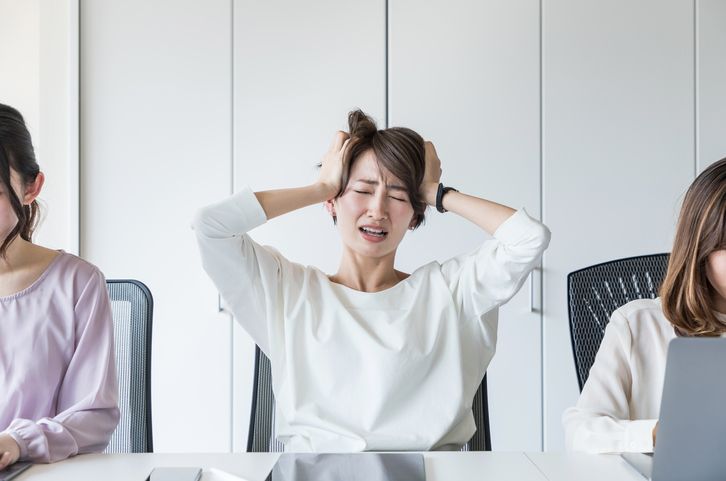
Sometimes, when one goes through enormous stresses, shocking events or traumatic experiences, they will experience a suddenly skyrocketed in hair shedding. This type of sudden hair loss is called telogen effluvium.
Telogen effluvium is the sudden and excessive shedding of at most 70% of your hair within 2 months after a shock or dramatic impact on your mind or body.
The impact of traction alopecia can be physical or mental:
- life-altering events (i.e. death in the family, devastating financial loss, diagnosis), - PTSD following distressing experiences (i.e. sexual assaults, violent attacks, car accidents) - childbirth, - postpartum stress, - extreme weight loss by restrictive diets or invasive weight loss procedures (i.e. liposuction, fat extraction surgery), - chronic autoimmunity diseases (i.e. cancer, HIV, anaemia), - dangerously high fever, - prescription of aggression medications (i.e. antidepressants, cancer treatment, steroids, anti-blood-clotting drugs), - intensive surgery, - long-term physical or emotional stress (i.e. stressful job, messy divorce, overwhelming work-family duties)
Telogen effluvium is temporary hair loss. Still it can be nerve-wracking as you see most of your hair suddenly thinning over a short period. Fortunately, most cases of telogen effluvium are temporary, as there is no direct damage or decay to the health conditions of the scalp, hair follicles, and hair strands.
You will see hair shedding stop once your body and mind recover from the major event (i.e. therapy, medical attention, change of medication). This stage can take 6 to 8 months. You will regrow lost hair afterwards.

Book Now to Experience
F8 Hair Regrowth Treatment
1 Minute Self-Registration
Date should not be before minimal date

9
Nutrient deficiency

You need a balanced and healthy diet, for a head of beautiful hair, as healthy hair growth highly depends on sufficient nutrient supply.
A low-calorie diet is a common hair loss cause. Cutting calorie intake dramatically means reducing nutrient intake by default. If you consume lower than 1300 calories daily, you are at high risk of hair loss and hair thinning.
Besides an overall restrictive diet, hair loss occurs with these specific nutrient deficiency:
- protein - iron - vitamin B7 (biotin), - vitamin B2 (riboflavin), - vitamin B9 (folic acid), - vitamin D, and - vitamin E
Make sure to consume enough calories and hair-growing nutrients for healthy hair growth. To do so, you can first measure the exact daily calorie and nutrient requirements using a calorie calculator and a nutrient calculator. Then, you have to plan your meals to ensure they reach your calorie and nutrient needs.
For weight loss, choose high-value foods (low-calories and highly nutritious) such as chicken breast, fish, leafy greens, beans, and whole grains. In contrast, avoid low-value foods such as fast foods and soft drinks, as they are mostly fat, refined carb and sugar.
You can also opt for nutrient supplements, which allows you not to plan your meals. However, supplements are often expensive.
Keep in mind that neither supplement nor food intake can revive thinning hair growth by 100%: it can take months before little (if any) hair regrowth effect takes place.


10
Poor life habits
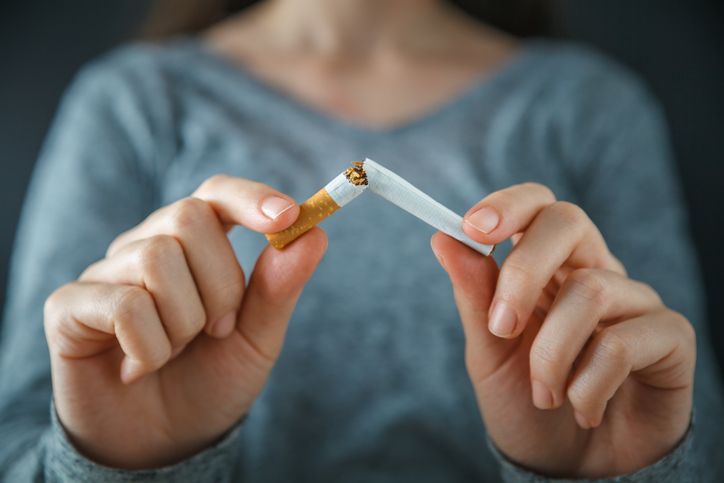
Besides the commonly known health impacts, smoking can also give you gradual but noticeable hair loss and thinning hair.
Cigarette smoke compositions (i.e. nicotine, phenol, carbon monoxide) can slowly constrict the blood vessel walls, resulting in poor blood flow at the scalp. Slow blood flow slows down metabolism and cellular turnover significantly. It reduces the nutrient flow for the hair follicle growth (nutrients are carried by red blood cells to the hair follicles). With insufficient nutrients, the scalp skin cells and hair follicles become unhealthy and inactive, making for thinning hair.
Hair loss caused by smoking can be permanent. While you should quit smoking to prevent further hair loss and further damage, you should also undergo hair loss treatments to initiate hair regrowth. However, you should beware of the many side effects of hair implants and minoxidil, such as:
- scalp irritation, - pimples, - more body hair, - face swelling, - scars all over the scalp, - weird hairline and hair pattern, - scalp necrosis, - slow hair growth, and - infected scalp skin, resulting in big, inflamed and sensitive bumps and cysts
Read More

11
Thyroid disease
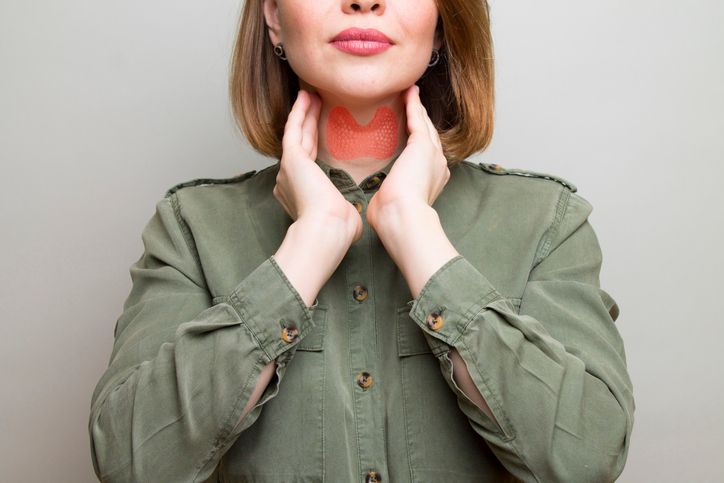
Thyroid disease happens when your thyroid gland produces too much (hyperthyroidism) or too little (hypothyroidism) thyroid hormones.
With severe or long-term thyroid disease comes evenly-distributed hair loss across the scalp.
Your hair loss ad thinning hair might be due to thyroid diseases if you also have the following symptoms:
- fatigue, - insomnia, - always cold/hot, - weight gain or loss, - constipation/diarrhoea, - slow/racing heartbeats, - puffy face, - weak/painful muscles and joints, - depressed, irritable, anxious
Thyroid disease is necessary for restoring your health and hair growth. Unfortunately, some patients may mistakenly attribute hair loss to the side effects of thyroid medication, thus stopping taking the drug, resulting in more thinning hair.
You must visit a doctor for a proper diagnosis, medication prescription and for thyroid diseases.


12
Want natural and fast hair growth? New Beauty F8 Hair Regrowth Treatment
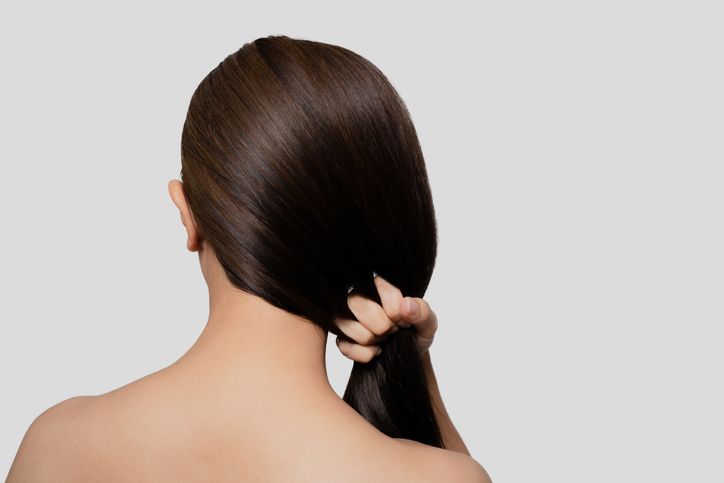
Hair Loss is not a matter to be ignored. A day you don't take active measures for hair health is a day more hair is lost.
Unfortunately, hair loss can be stubborn: natural foods and supplements can take months to begin showing little (if any) results; at-home laser combs can burn your scalp if not handled correctly; hair transplant surgery and prescription medication can bring serious side effects.
New Beauty's F8 Hair Regrowth Treatment is a non-invasive, non-surgical and effective hair loss treatment.
Gentle laser energy sweeps evenly across your scalp, seeping into the innermost tissues to stimulate skin cells and hair follicles, thus encouraging their self-repair mechanism.
The laser energy also strengthens the surrounding capillaries and blood flow, effectively improving nutrient supply to the various hair follicle roots.
Moreover, we infuse our exclusive, medical-grade hydrating serum into your scalp, calming your scalp's oil secretion and reviving active hair roots.
With an active and healthy scalp and hair follicles, you will see less hair loss and luscious, strong hair growth in as few as 3 months!
FAQ
Why are my hair strands falling out?
There are many reasons for hair loss. Besides genetics and aging, internal and external factors such as stress, medical treatments, hairstyles, nutrient deficiencies and smoking can all contribute to patchy hair loss (alopecia areata) and large-scale hair loss (androgenetic alopecia areata)
When should I see a doctor for my hair loss?
You should visit a medical professional if you notice a significant large amount of daily hair loss, painful scalp, or if bald spots or receding hairline are worsening at an alarming rate.
How does the F8 Hair Regrowth Treatment work?
Gentle laser energy sweep across your scalp to seep into the innermost tissues and hair roots, stimulating the skin cells and hair follicles. The laser energy also strengthens the blood vessels which supply nutrients to the hair follicles. A hydrating serum is also infused into your hair roots to revive healthy hair follicles and scalp tissues. Your scalp tissues and hair follicles become energized, growing strong and shiny hair strands.
Am I suitable for the F8 Hair Regrowth Treatment?
This treatment is non-invasive and painless, making it suitable for all skin types and hair types. This treatment works on most hair loss types. Still, you are welcome to consult our hair growth expert to evaluate your suability.
How should I care for my hair after the F8 Hair Regrowth Treatment?
You should drink plenty of water and use hydrating hair shampoos and serums to improve microcirculation at the hair roots. You should not scrub your scalp too hard while washing your hair. You also should not wash your hair with overly hot or cold water.

Book Now to Experience
F8 Hair Regrowth Treatment
1 Minute Self-Registration
Date should not be before minimal date
Recommended Articles
COPYRIGHT© NEW BEAUTY MANAGEMENT LIMITED 2025. ALL RIGHT RESERVED.

